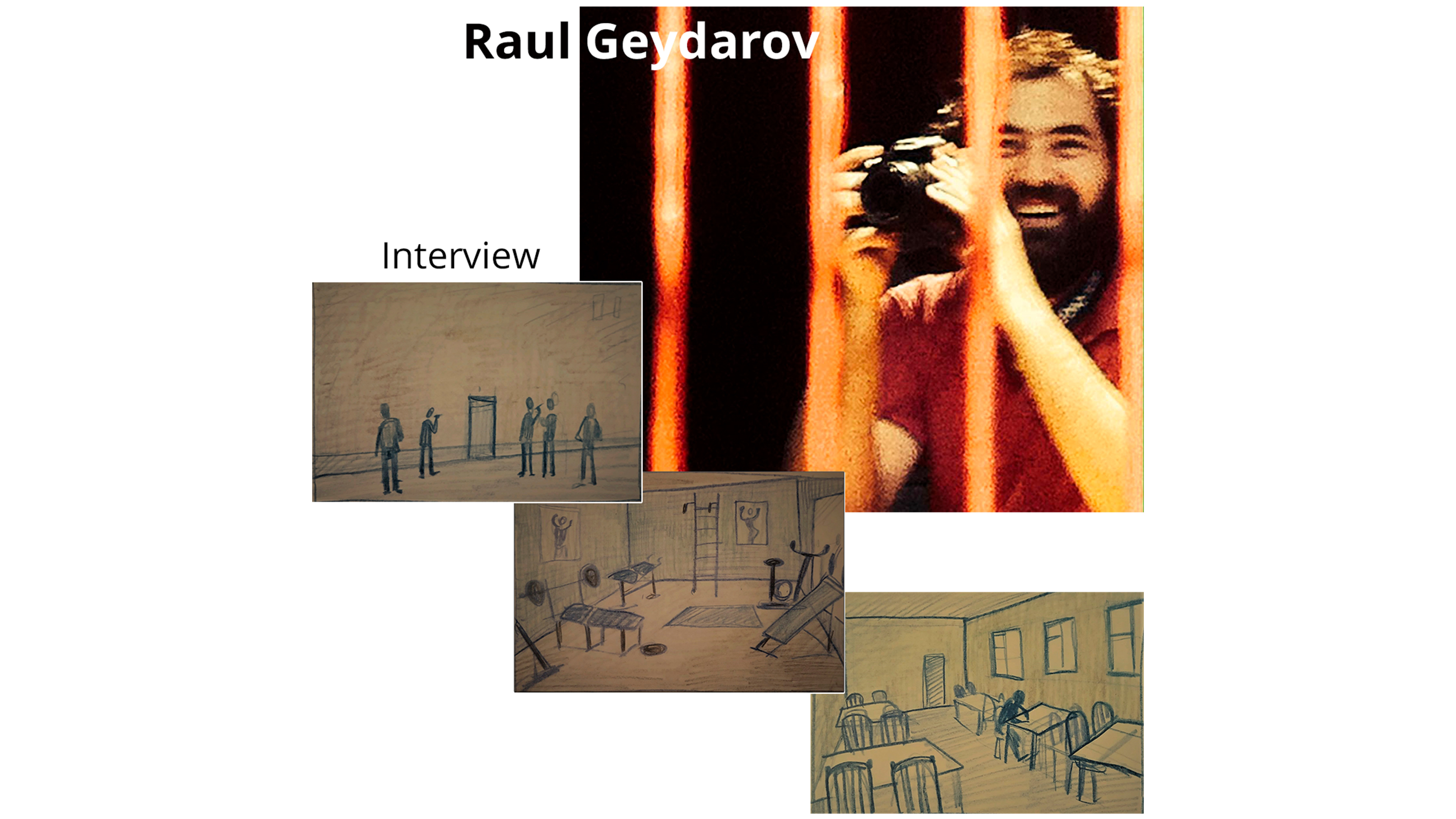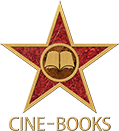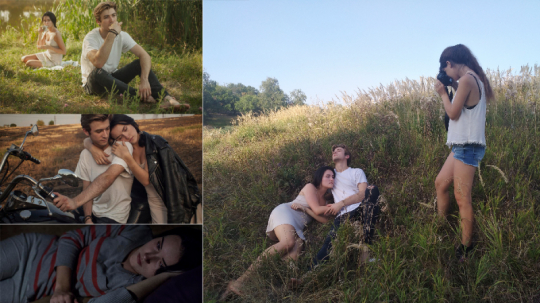
First of all, how did you decide to become a filmmaker? What did you start with? What are you up to now?
I became a director by chance. Once I together with my friends were celebrating a holiday and decided to make a film. Just for fun. It was very funny. We did not manage to shoot a film but my friends advice me to go study to become a director. I thought it is a good idea. And now I am studying on the second course in RSUC.
A Photo Story (frame and sequence in American universities) – is a traditional task in directing course.What skills did you get while working on this project? Why is this format interesting for directors?
Photo Story is interesting because you have to tell the story with the help of photos and sound. The main purpose of this task is to train dramaturgy skills and making a storyboard. In order to make a film out of photos, you need a simple and concrete, so that it will be easy to perceive. The same thing is with a storyboard. A frame - an action!
What new experience did you get while creating this project? Was there a particular creative or professional task that you set for yourself?
Yes, I have such a task. To shoot the whole Photo Story using general frames. We were guided by Roy Andersson’s films, he was the main reference for us.
“One person's life” – tell us please, how did the idea of this appear? What appeared first: the idea or visual range?
Everything appeared at once. This idea can be implemented only this way. I wanted to depict the connection between a person and his place, where he lives, works, relaxes, walks. We all have places that surround us every day. The main question I ask myself is: are we necessary in those places? Will something change, if we disappear? Will someone miss us? Will someone miss a day at work etc.
Your story has a special directing trick that distinguishes it from all other stories from the contest: nonlinear type of narration, the repeating of the same frames with growing speed. Tell us, how did the idea appeared. Did this idea appear with an idea of the plot at the same time or while working on the project?
Yes, as I told you, the idea and directing trick appeared at the same time. We approved the chosen locations and started drawing sketches.
Sound plays a big role in your story. How was the sound series created?
Everything is simple. Each location has a particular sound. Then I started choosing the necessary sounds. The most difficult was to choose the sound of the subway.
Tell us, how were you getting ready - what did you start with and what was considered at the last very moment? Did you follow the storyboard or were you improvising? What was the most difficult about the preparation?
We had to approve the number of chosen locations. How many of them do we need? Which are the most important? We started thinking where does a common person go every day and how does he spend his free time? When we had chosen a location we started thinking about stylization. First we wanted focus on Stanley Kubrick. To make symmetrical shots in the style of postmodern, everything should be bright, juice and evocative. But you can see what we have as a result.
How was the casting for the main character held and how did you work in the shooting process? Were there other members of shooting cast? Tell us about the crowd of extras, who are those people?
There was no casting. I knew who is gonna play the main character from the very beginning. This is my groupmate Timofey Shirenko. He has an interesting type, good plastic. There were also an artistic director, a cameraman and a producer. The artistic director was engaged in filling the frame, looking for locations. The cameraman was creating the frame, composition, color correction. The producer was negotiating about shooting in the locations.
The Photo Story “One person's life” has a limited number of frames but there are a lot of locations. Tell us how was the shooting organised? How were you choosing the locations and how was the shooting cast moving from one location to another? Were there any surprises on locations?
The shooting was organized in a very simple way. We had been talking with the owners of the location and went there to shoot. Throughout the story we have a natural lighting that is why we were shooting very fast. The most difficult was to choose necessary poses for the main characters. We were moving using the subway, as our locations were in different parts of Moscow. The most difficult frame to shoot was in the Tretyakov Gallery. We have to choose time in order not to bother anyone. For example, in the gym we took a shot of a local athletes. They agreed to come up to the exercise machines and pose for us. The workplace of the main character was shot in RSUC. We had to find a lot of boxes. To cut a long story short, we were shooting like we could!
What do you like the most about the shooting? What emotions do you have when you released this project?
The thing I like that it is not an ordinary form and we have to work on general frames. I have never thought that it would be so interesting. We have considered a lot of locations. It was interesting to choose them and comparing. Also, it was very interesting to make montage for such a work. There are great opportunities for montage. It can be shorter or longer or you can start from the end.
What would you advise other photographers or filmmakers who will want to try shooting a Photo Story?
I would give them a piece of advice to shoot the things that touches or cares them. Be like Van Gogh.
you may also like
Interview with the winners in the nomination “Best Photo Story Without Text” 2018 Andrey Shurpin and Valerie Sagura...
NYFA alum Ivonne Garcia - the winner in the nomination "Best Photo Story With...
Lisa Lyashenko shared her most intimate facts of creating “With Love August”. Find out what was the reason for creating such a touching...








